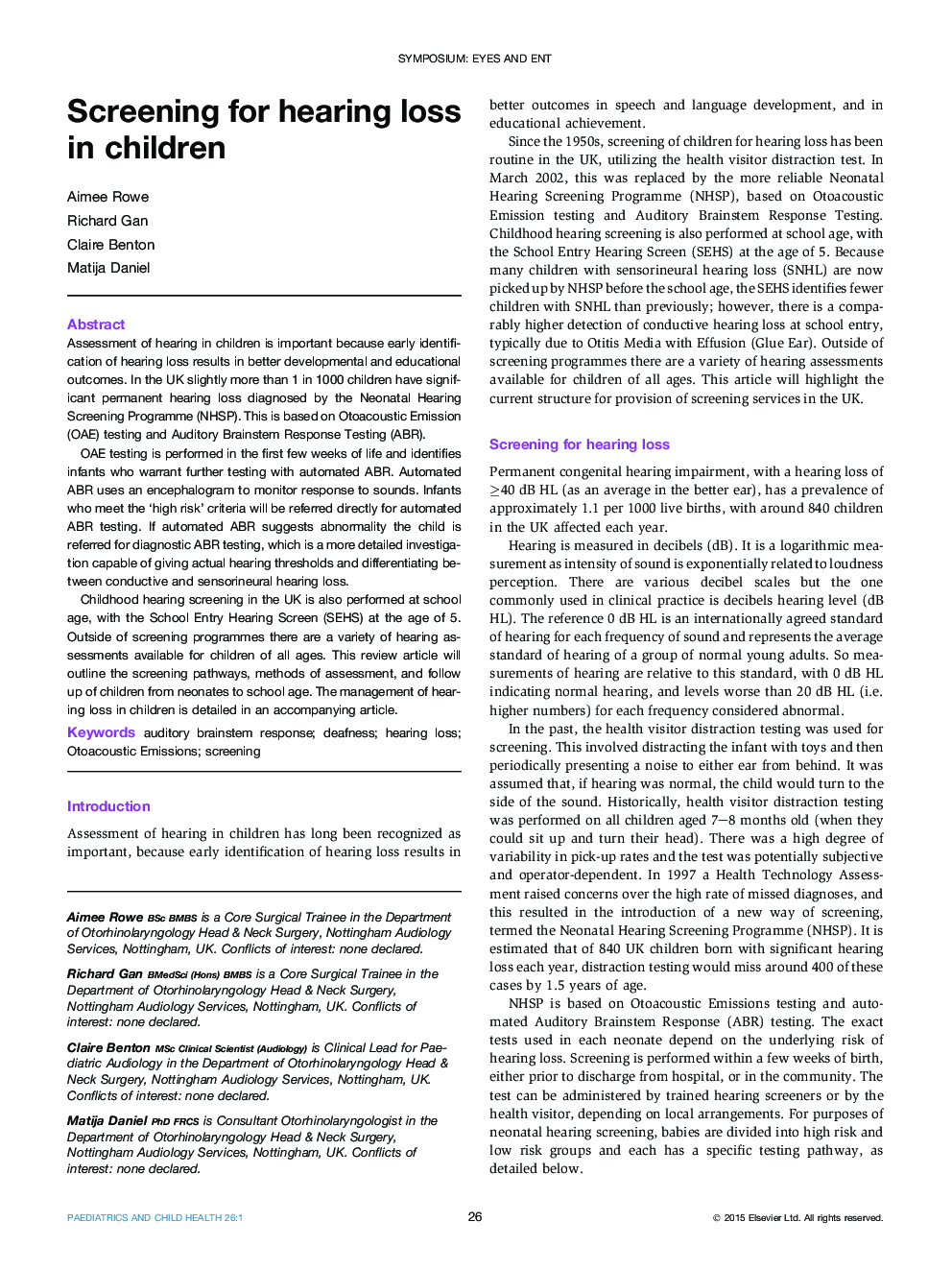| کد مقاله | کد نشریه | سال انتشار | مقاله انگلیسی | نسخه تمام متن |
|---|---|---|---|---|
| 4172067 | 1275717 | 2016 | 5 صفحه PDF | دانلود رایگان |
Assessment of hearing in children is important because early identification of hearing loss results in better developmental and educational outcomes. In the UK slightly more than 1 in 1000 children have significant permanent hearing loss diagnosed by the Neonatal Hearing Screening Programme (NHSP). This is based on Otoacoustic Emission (OAE) testing and Auditory Brainstem Response Testing (ABR).OAE testing is performed in the first few weeks of life and identifies infants who warrant further testing with automated ABR. Automated ABR uses an encephalogram to monitor response to sounds. Infants who meet the ‘high risk’ criteria will be referred directly for automated ABR testing. If automated ABR suggests abnormality the child is referred for diagnostic ABR testing, which is a more detailed investigation capable of giving actual hearing thresholds and differentiating between conductive and sensorineural hearing loss.Childhood hearing screening in the UK is also performed at school age, with the School Entry Hearing Screen (SEHS) at the age of 5. Outside of screening programmes there are a variety of hearing assessments available for children of all ages. This review article will outline the screening pathways, methods of assessment, and follow up of children from neonates to school age. The management of hearing loss in children is detailed in an accompanying article.
Journal: Paediatrics and Child Health - Volume 26, Issue 1, January 2016, Pages 26–30
